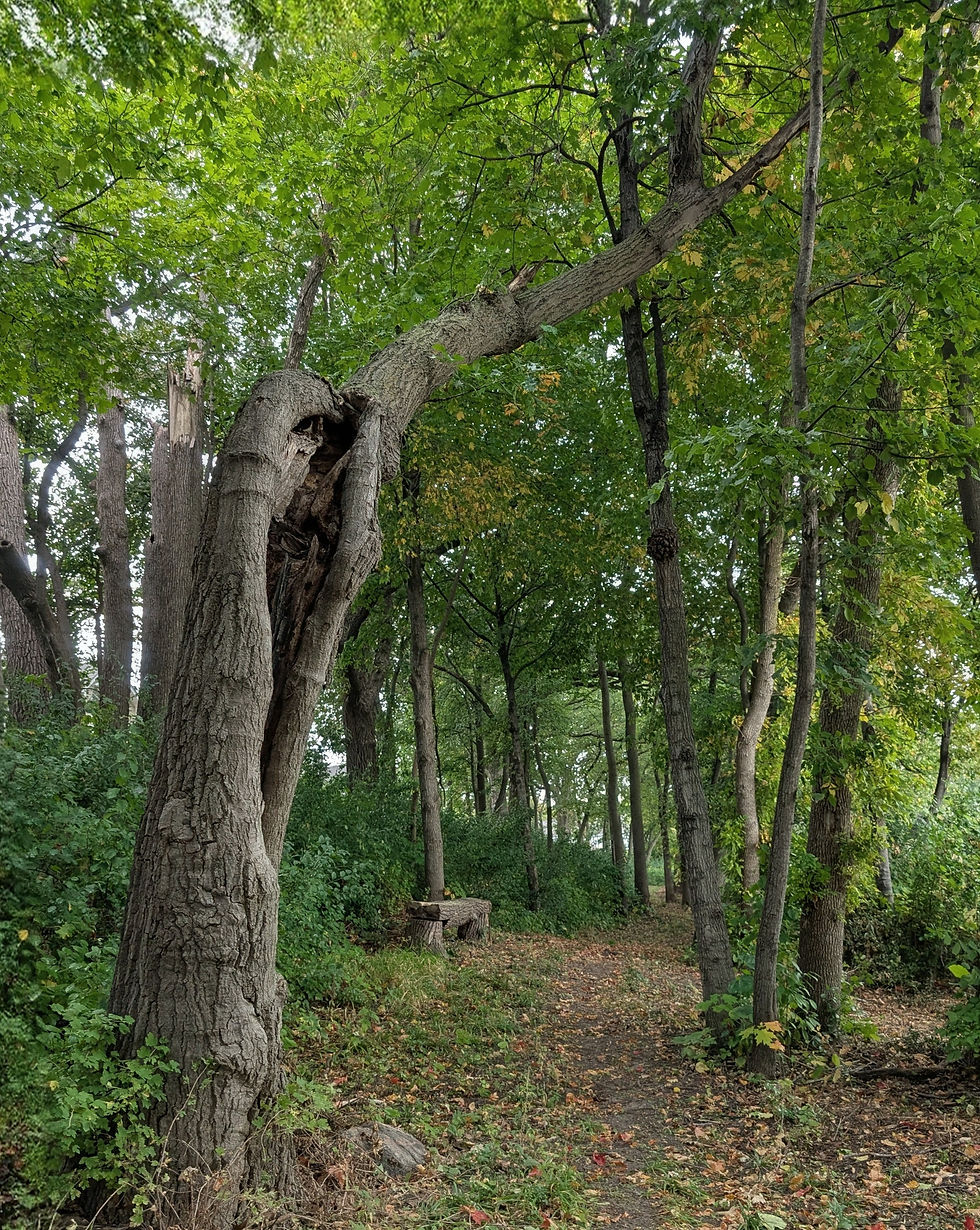Prehistoric Stinker
- D. S. Brumitt
- Oct 30
- 1 min read
Stinko Ginkgo.

That’s what we called them when I led an educational tree program for kids at the Minnesota Landscape Arboretum. There’s nothing quite like a really awful-smelling tree to get a kid interested in arboriculture. Herding a group of unruly preteens along the walkway, I’d stop and point out the large ginkgo tree across from the (ironically) yummy-smelling rose garden and, if it was the right season, I’d challenge them to pick up a fruit from the ground and give it a sniff. Yuk!
This ginkgo is not in the Arboretum. In fact, it’s 4,900 miles away growing in the courtyard of my panzio in Szentendre, Hungary. With no fruit and no fragrance it’s clearly a male tree but impressive in its gorgeous, classic fan-leaf formation.
"Ginkgo appeals to the historic soul: we see it as an emblem of changelessness, a heritage from worlds too remote for our human intelligence to grasp, a tree which has in its keeping the secrets of the immeasurable past”.
Albert Seward
The ginkgo is the oldest living species in the order Ginkgoales, extending back to the middle Jurassic period, and widely regarded as a living fossil. A ginkgo can live for more than 1,000 years. It’s resistant to pests, pollution and poor soil conditions – virtually indestructible. Six ginkgo trees even survived the blast in Hiroshima and are living today. Survivor trees.
The only thing not to love about a ginkgo is that distinctive ’rotting-flesh, vomit’ smell exuded by the fruit of the female trees – it’s enough to gag even a 12-year old boy!



Comments